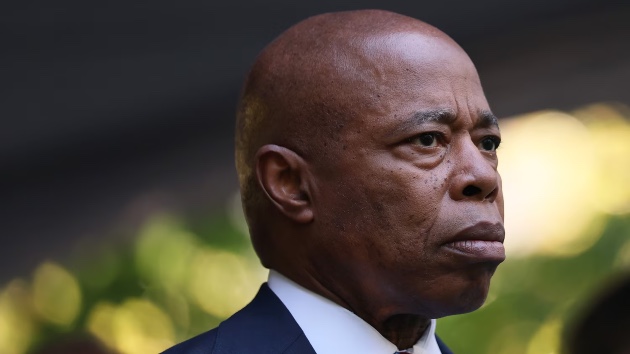Cargo ship initially lost power due to loose wire before crashing into Key Bridge: NTSB
Written by ABC Audio. All rights reserved. on November 18, 2025
(BALTIMORE) — The cargo ship that rammed into Baltimore’s Key Bridge in March 2024, shortly after experiencing two blackouts, initially lost power due to an improperly installed wire, the National Transportation Safety Board revealed on Tuesday.
The NTSB further found safety issues related to the Dali’s machinery and electrical systems that prevented the ship from fully recovering following the initial blackout, the agency said.
The Dali, a Singaporean vessel, struck one of the piers on the Key Bridge early on the morning of March 26, 2024, causing the bridge to collapse and killing six construction workers who were filling potholes on the span.
“This tragedy should have never occurred,” National Transportation Safety Board Chair Jennifer Homendy said during a hearing on Tuesday on the findings of the agency’s 20-month investigation into the crash. “Lives should have never been lost, as with all accidents that we investigate, this was preventable.”
According to the NTSB, on the day of the crash, a wire that had loosened over time due to an unstable connection ultimately disconnected from its breaker, resulting in a loss of propulsion and steering. A label identifying what the wire powered prevented it from being fully inserted into the breaker, the agency found.
Homendy commended her staff for this discovery.
“Our investigators routinely accomplish the impossible, and this investigation is no different,” she said. “The Dali is almost 1,000 feet, and it’s as long as the Eiffel Tower is high with miles of wiring and thousands of electrical connections. Locating a single wire that is loose among thousands of wires is like looking for a loose bolt in the Eiffel Tower.”
The NTSB said the loose wire could have been identified during inspections, however the agencies said the inspections performed by the ship’s operator, Synergy Marine Group, were not adequate enough.
Following that initial power failure, the NTSB found that multiple parts of the back up systems that were supposed to restore power and functionality to the ship and prevent the loss of propulsion were not configured correctly.
A second blackout occurred due to insufficient fuel pressure after a flushing pump being used to supply fuel to two generators shut off during the initial blackout and wasn’t restarted, the NTSB said. Investigators found the crew’s operation of flushing pump was “inappropriate” because the pump was not able to restart automatically when power was restored following a blackout and had to be restarted manually.
“According to the vessel’s classification society, the operation of the pump as a fuel oil service pump did not meet classification requirements because it was not able to restart automatically,” Barton Barnum, an engineer with the NTSB’s Office of Marine Safety, said during the hearing.
The ship experienced two blackouts while docked the day before the crash, according to the NTSB. The initial blackout was caused by human error, while the second similarly occurred because the flushing pump had shut off, Barnum said.
The NTSB determined that Synergy provided inadequate oversight by not stopping the crew from using the flushing pump as a fuel service pump.
The Dali crew responded quickly and in a timely manner to the first blackout, the NTSB found.
Crews onboard the container ship were able to warn officials about the malfunction, giving them time to close the bridge to oncoming traffic before the crash.
The NTSB said Tuesday that the workers on the bridge, though, had not received any warnings of Dali’s emergency situation. Had they been notified, they “may have had sufficient time to drive to a portion of the bridge that did not collapse,” Scott Parent, an NTSB highway factors engineer, said.
There are no American National Standards Institute standards for highway workers to receive emergency information regarding life-threatening events in work zones, stressing the “need for effective and immediate communication,” he said.
This is a developing story. Please check back for updates.
Copyright © 2025, ABC Audio. All rights reserved.





